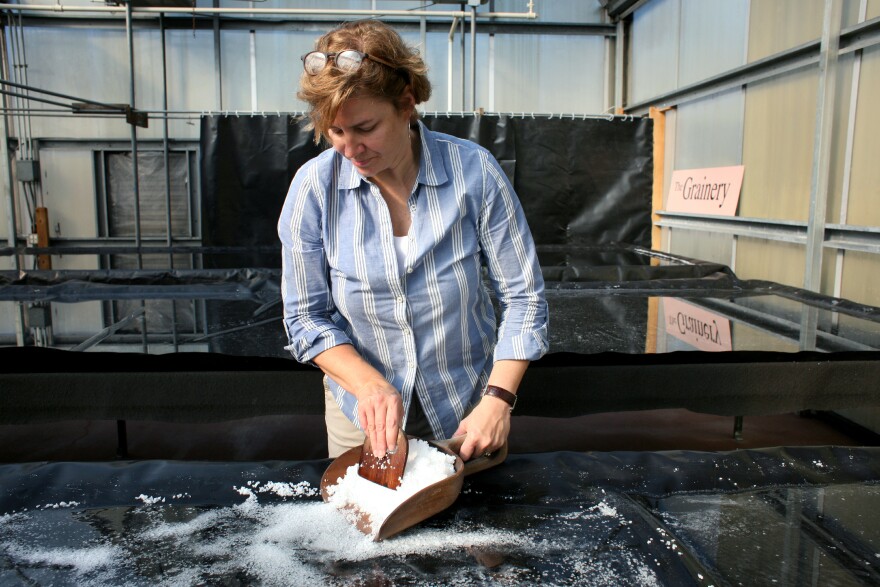Thanksgiving feasts are always in need of something special.
Can a sprinkle of artisanal salt noticeably pump up the experience?
Let's meet a new Appalachian salt-maker in West Virginia and find out.
J.Q. Dickinson Salt-Works is nestled in the Kanawha River Valley, just southeast of the capital city of Charleston in the small town of Malden (not to be confused with Maldon, a sea salt brand from the U.K.). It's mostly pasture land, with cows nearby.
Amid the livestock, there's a new, small — you could call it micro — salt works.
"This is our well, in the field over here. It goes down 350 feet," Nancy Bruns, CEO of J.Q. Dickinson Salt-Works, says.
The wellhead is simple, white and about 2 feet high. It took a couple of weeks to drill, and then came the salty water.
"It did gush; it absolutely did gush. We went through a lot of fresh water on the way down. And we all had cups, we were tasting it on the way down, and I just said no, keep drilling, it's not salty yet."
She's a seventh-generation descendant of salt workers who started the original J.Q. Dickinson Salt-Works in 1817. This is a revival of that company.

Long ago, when the mountains rose up, an ancient ocean went underground. But some of it stayed near the surface.
The pioneers needed salt and the meatpackers in Cincinnati did, too. There was only one choice: drill deep. Fifty companies did, burning timber and coal to evaporate the water. Slaves were brought in for much of the labor.
It was a big, noisy, extractive industry.
At the new Dickinson Salt-Works, an almost-worn-out electric pump is the only real industry. There are two large and peaceful greenhouses — here they call them sunhouses.
"It gets up to around 150 degrees here in the summer," Megan Parker, the operations manager, says.
Parker is happy to be using sunlight instead of burning fossil fuels.
The salt water is stored in large trays lined with black polyethylene. You can see the beginning of white salt crystals — they're in graceful, almost mystical patterns.
"It is magic. It's my favorite part of the process, to see a bed that, like this on our right, that's completely clear, clear liquid, and then the next day you come in and you start to see these beautiful crystals forming," Bruns says.

Bruns uses a wooden rake to gather finished salt crystals into a pile. Her company will produce about 10,000 pounds this year to be dried, sorted, put in small jars and shipped out to top restaurants like The French Laundry in northern California, Husk in Charleston, S.C., and Woodberry Kitchen in Baltimore.
"I think of salt as like wine, so the minerality of our salt is different from the minerality of any other salt, kind of like a pinot noir grown in California is different from a pinot noir grown in France. Could be exactly the same vine but because of the earth that it's grown in it gives you a different flavor," Bruns says.
A suggestion from the expert salt-maker for your holiday feast?
Whisk up some dark caramel sauce, sprinkle away and approach cautiously with a small spoon.
Copyright 2021 NPR. To see more, visit https://www.npr.org.



